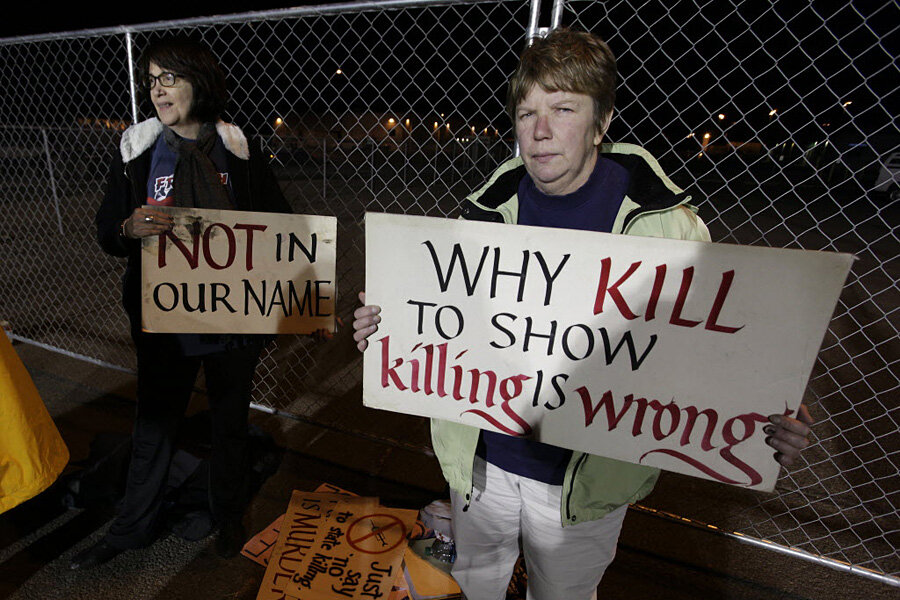Connecticut high court spares lives of 11 death-row inmates
Loading...
Three years after Connecticut abolished capital punishment, the state's Supreme Court overturned the death sentences for all 11 inmates remaining on death row.
As the Associated Press reported, the 4-3 ruling was the result of an appeal from death-row inmate Eduardo Santiago, whose attorneys had argued that any execution carried out after repeal would constitute cruel and unusual punishment. Mr. Santiago faced the possibility of lethal injection for a 2000 contract killing in West Hartford, Conn.
“Upon careful consideration of the defendant’s claims in light of the governing constitutional principles and Connecticut’s unique historical and legal landscape, we are persuaded that, following its prospective abolition, this state’s death penalty no longer comports with contemporary standards of decency and no longer serves any legitimate penological purpose. For these reasons, execution of those offenders who committed capital felonies prior to April, 25, 2012, would violate the state constitutional prohibition against cruel and unusual punishment,” Justice Richard Palmer wrote for the majority.
The Connecticut ruling came just a week after a grand jury in Colorado sentenced James Holmes to life in prison with no possibility of parole, instead of executing him. Mr. Holmes opened fire on movie-goers at a midnight premiere of “The Dark Knight Rises” in July of 2013, killing 12 and injuring dozens. Holmes committed the crime in Colorado, a state that retains the death penalty but has only executed one person since 1977.
Is the death penalty, once a staple of American domestic policy, turning obsolete?
Not exactly. A 2014 Gallup poll found that support for the death penalty in cases of murder dropped to a low of 42 percent in 1966 and climbed to a high of 80 percent in 1994. Now, after two decades of steady decline, 63 percent of Americans favor capital punishment, with support declining most significantly among Democrats – from 75 percent to 49 percent. Yet, this is still a clear majority of Americans.
An April Pew Research Center poll found that of all surveyed (63 percent of which favored death for those convicted of murder), an overwhelming 71 percent said there was some risk that an innocent person could be put to death.
Those who oppose the death penalty say this is reason enough to abolish it. As the Washington Post reported, former Attorney General Eric H. Holder Jr. has openly expressed concern about botched executions and the killing of innocents.
“There’s always the possibility that mistakes will be made,” he said. “Mistakes and determinations made by juries, mistakes in terms of the kind of representation somebody facing a capital offense receives….There is no ability to correct a mistake where somebody has, in fact, been executed.”
As of August 2015, 19 states and the District of Columbia had abolished the death penalty – a minority to the 31 states that still allow it.






